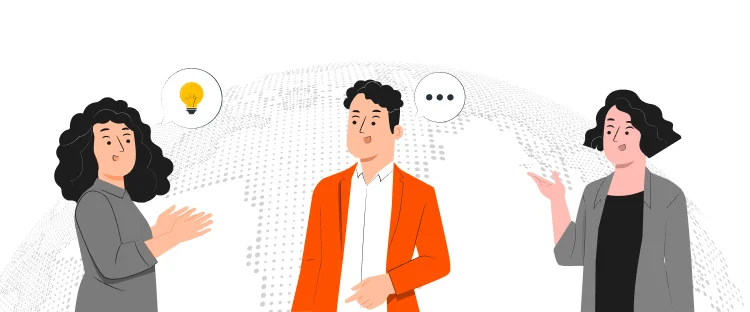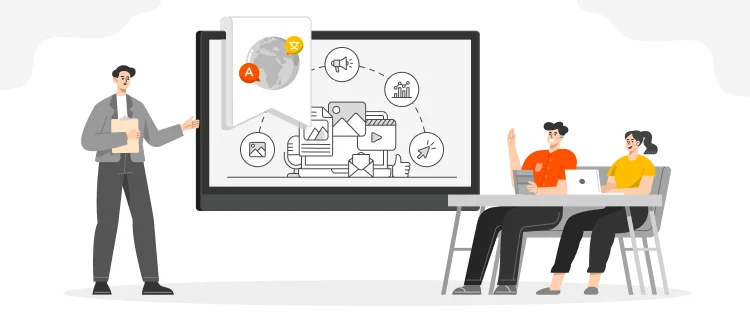We’ll briefly start with what medication translation exactly means. Then we’ll quickly dive into what makes a high-quality medical translation. Lastly, we’ll discuss in detail the translation process that professional translation companies and medical translators often use. And that should be followed in order to produce a clear, natural-sounding translation of the work at hand.
So, let’s begin.
Medical translation is the translation of any material related to healthcare, medical products, biotechnology, and the pharmaceutical industry. It’s a very broad type of translation that covers everything from patent information to medical records, regulatory documents, marketing communication, and more. Plus, medical translation also has multiple sub-categories, such as medical device translation, labeling, and clinical trial translation. This translation type is an important domain of translation in general.
A high-quality medical translation – what in the world does this mean?
What we mean by a high-quality medical translation is one that carries the following number of characteristics:
Medical translations are extremely mission-critical. Anything below the professional standard and you’re gambling on business repercussions and loss of life.
In fact, there are tons of areas where quality is of utmost importance. Such as medical devices, drug information, regulatory standards, clinical trials, and marketing materials, just to name a few. As the room for errors is little to nothing, professional translators must stick to a stringent translation process. A process that ensures that the text translated is up to scratch – every time!
Let’s flesh out the 5 major steps of this medical translation process.
The first step is simply to have a client discussion in order to scope out the specifics of the translation task. At this stage, the translator understands the target audience, the type of the document, how long it is, and glossary, etc.
To get a sense of the content, the translator will usually read or quickly scan the source material. They may compile a list of key terminologies, concepts, and glossaries. And get them validated by collaborating with the client. They will also make a decision about if there’s anything that needs preliminary research.
One thing that’s crucial throughout this phase is to keep the lines of communication open with the client. In some cases, the translator may need to get clarification about certain terms or phrases that seem confusing or ambiguous.
The translator may also need to check the quality of the original text. As there may be errors, mistakes, or inconsistencies within the source material. So they will consult with the client to clarify doubts, make suggestions for improvement, or just double-check the provided information.
After getting a feel for the input (the source text), the translator will begin to work through the text in a systematic fashion.
They will translate the text by selecting a chunk of 5-10 words at a time. Such that the selected chunk is a distinct and comprehensive meaning unit.
Anything over 5-10 words is typically hard to retain in memory, resulting in sloppy or worse wrong translation. So, if the sentences are longer, a professional medical translator would break them off into small, discrete units. This will help them to translate any chunk of medical text without losing its meaning.
What a medical translator has got this far is just a draft translation. The next step is to review the entire translation by comparing it against the original.
The main goal of the translator here is to make sure that they have not explained, improved, or in any way meddled with the content. Plus, the translated text is consistent with the spirit of the original text and terminologies as well and it leaves the reader with the same effect.
Most medical translators will often come up with any segments, phrases, or chunks of the text that don’t sound natural or lack the formality and tone of the source text. Thus, fixing them right away.
This step is dead simple: set your work aside for a while and come back to look at it with fresh eyes.
The translator has been reading, rereading, and reviewing the same text for hours or even days, depending on the length and complexity of the task.
So, the plan is to set the translation away, ideally for a day or two at the very least. This makes sure that the translator comes prepared for the fifth and the final step in the process, no less important though.
Up till now, the initial translation is completed. The accuracy of the translation is also reviewed. And there are no errors whatsoever, whether they are related to grammar and punctuation, orthography, medical terminology, or any missed or misinterpreted meaning.
In this final step, a professionally-trained medical translator will again reread the entire translation. But this time, without consulting the provided references.
With intense concentration, they will primarily focus on the quality of the expression. Which is basically three things: naturalness, complexity, and registration or style.
The translator will carefully go through the translation, looking for any words or phrases that look odd, would be difficult to understand, or are misinterpreted. Plus, they will try to avoid any lingering concerns related to the tone and style of the translation produced. By applying the final edits, they will obtain a final translated material of the highest possible quality.
Not all translators follow this systematic process which is a way to ensure high-quality medical translation. Professional medical translators get this methodology drilled into them during their tertiary translation courses. So, they follow it each and every time. But sadly, the same could not be said about untrained translators.
Considering the significance of this 5-step medical translation process, MT only employs trained and professional translators who instinctively adopt all these steps, day in and day out, producing top-notch translations.
Contact us today if you want your next medical translation project to carry the best quality and avoid any and all alterations or misinterpretations in technical terminology or nuance. We have served medical clients in a variety of industry verticals for many years, and look forward to assisting you in successfully navigating the challenges of a high-quality translation.

Colorado is said to be one of the best places to do business because the business environment is very friendly
Read More
The global marketplace has become an attractive place for brands and businesses, where they strive to create a presence of
Read More
CAD, or computer-aided design and drafting (CADD), is the use of computer technology for design and design documentation. CAD software
Read More
Many global companies, foreign governments and Iranian are hoping to see an increase in investment in Iran after declaring the
Read More
Artificial intelligence has taken a big space in almost every industry. There is also a widespread acceptance that AI is
Read More
Persuasion is all about manipulating other people behavior. At first it might sound immoral but it doesn’t have to be.
Read More
Now days everyone is searching for good ideas for their company they wanted to be more creative, they wanted to
Read More
Technology has now much diverse roots in this age of development. Now it is not wrong to say, that you
Read More
Localization is the practice of altering the functional properties of a product and also its characteristics. This is easily done
Read More


Document Translation
Professional document translation by native expertsApp Localization
Get more downloads by adapting your app for different target marketsVideo Translation
Multilingual translation and subtitling servicesWebsite Localization
Adapt your website into multiple contexts for global reachSoftware Localization
Adapt your software for global usersGame Localization
Reach new players with localized gameplayMTPE
Refine AI translations for natural fluencyBusiness Translation
Professional translation for business documents and websitesDTP & File Conversion
Professional DTP and File conversion, supporting multiple file formatsProofreading
Perfect your content with expert review© Copyright 2025 MarsTranslation